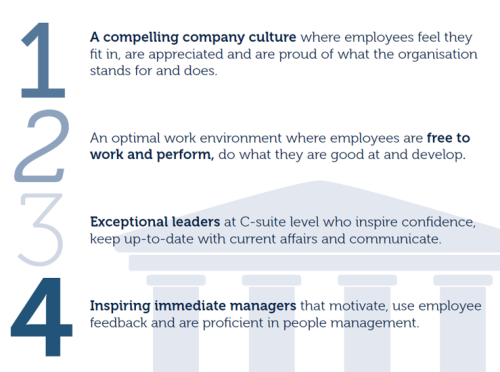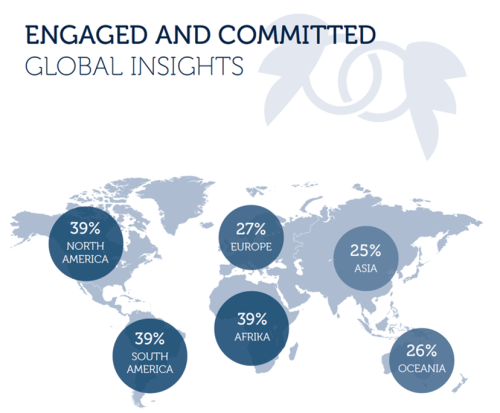
There are a great deal of research and writing about engagement. Sometimes, I think it’s all we see. And there are a lot of solutions providers who will help you measure engagement, diagnose why engagement is low, increase engagement – and any other thing you want to do with or about engagement.
Here’s the challenge: every one defines engagement in a different way. It’s enough to drive you crazy. It drives me crazy. Maybe not dazed and confused, but definitely crazy. I spend most of my time at the intersection of corporate culture, business performance, what I call humanity. You could just as easily call it engagement – except I think humanity is bigger than engagement.
My particular bias against “engagement” notwithstanding, my friends at Effectory International in Amsterdam have published a very interesting report introducing their compilation of this year’s Global Employee Engagement Index (vol. 3). I am interested in this report for three reasons:
- I know and like these folks a lot
- I actually like their definition of engagement
- They’ve indexed engagement globally – in 54 countries around the world
It’s pretty interesting reading. Here’s how they think about engagement:
The basis of engagement – or what people want from work:
This is a much more complete definition than most. I like the “compelling company culture” language – not a one-size-fits-all definition of culture. I like the inclusion of freedom (see www.worldblu.com ) at work. And I especially appreciate the inclusion of immediate managers in the mix, along with exceptional leaders in the C-Suite.
I also think that their data have credibility because they can show regional differences in engagement drivers around the world:
With data that show a global average of engaged and committed employees of 29%, they are also able to break it out by region:
The discussion that follows is engaging (see what I did there?) and the analysis of this year’s data covers topics like:
- Why businesses need employee engagement
- What people want from work
- Why engaged and committed employees leave
- Specific strategies for strengthening the four “pillars” of engagement
There are several case studies, as well as a number of key takeaways that you’ll want to note as you think about your culture and your employees.
You may not have heard of Effectory International, but you should get acquainted with their work through this analysis and report. It may reduce your level of dazedness and confusion. I think you’ll thank me.














